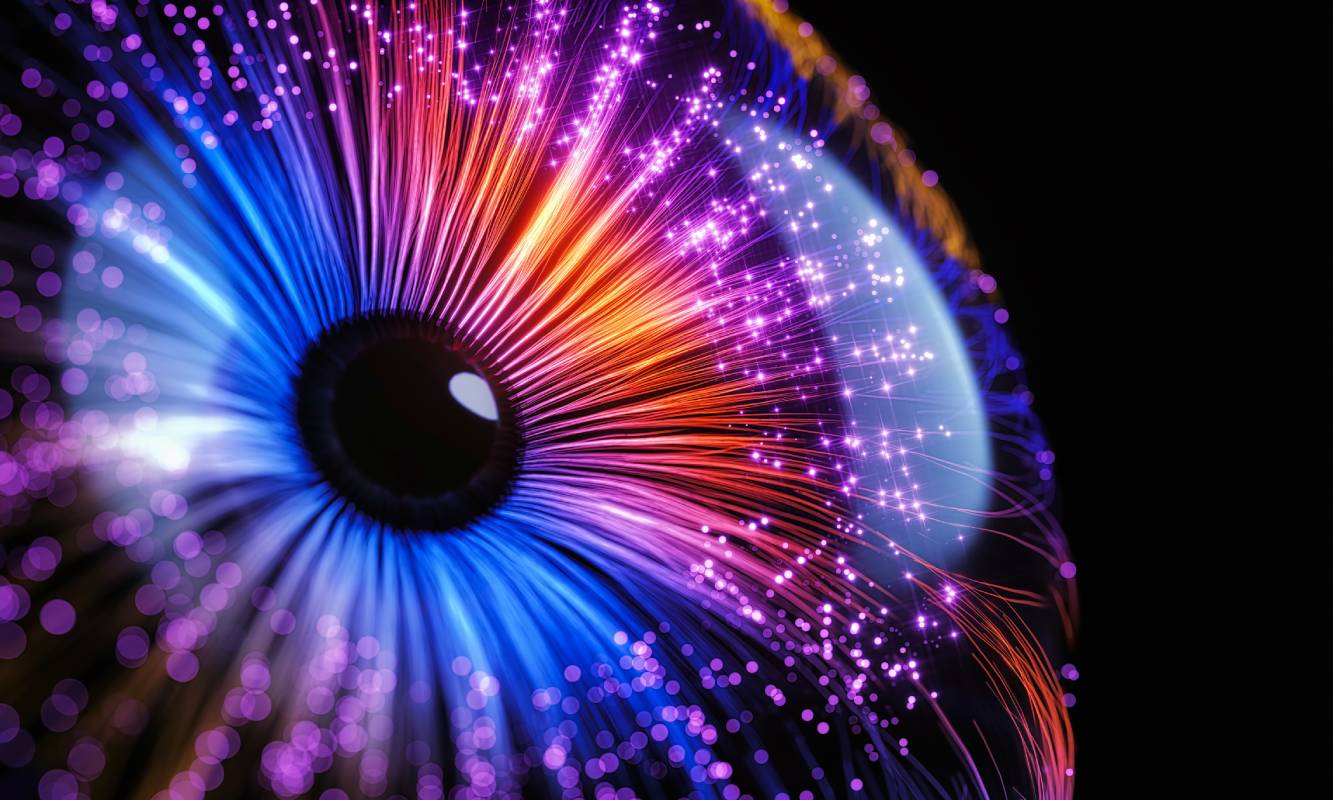As work, school, and much of daily life become increasingly dependent on computers, concerns about the effect of screen use on sleep and brain functioning grow in the scientific community. Some studies indicate that exposure to light at night, especially blue light, may be linked to chronic health conditions such as diabetes, heart disease, and some cancers.1–3 In a Harvard study, researchers shifted the sleep schedules of participants to alter their circadian rhythms and noticed that their blood sugar levels increased while their levels of leptin, a hormone that regulates the feeling of fullness, decreased.4 Research on the precise health effects of blue light at night is inconclusive as high screen use is often correlated with sedentary behavior and poor sleep hygiene, both of which are proven to be detrimental to human health.
Light plays an integral role in human circadian responses, regulating sleep and alertness by suppressing release of the “sleep hormone,” melatonin. About 20 years ago, scientists discovered that the human eye contains not only visual photoreceptors for detecting changes in color and light, but also photosensitive retinal ganglion cells that trigger circadian responses.3 These cells are particularly sensitive to blue light, likely because these wavelengths of light (415-455 nm) are also found in the sky. During the day, exposure to blue light is associated with increased attention, mood, and reaction times, but at night, it suppresses melatonin and shifts circadian rhythms more than any other color of light.4
Concentrated blue light may also have a direct effect on the retina of the eye, causing photochemical injury. Blue light contains higher energy than most other colors, and long term exposure can cause visual fatigue and nearsightedness.5 Increased exposure to sunlight, which is primarily composed of blue light, is a risk factor for cataract formation.
A study published in 2020 found that a third of study participants used a blue-light emitting device 9 to 11 hours a day and another 16% used the devices 12 to 14 hours per day.6 Despite inconclusive research on the links between blue light and physical conditions, higher screen time is associated with moderate to severe depression.7 The implications of this research are particularly concerning for children and adolescents, who are more susceptible to fluctuations in circadian rhythms and negative effects of light on brain functioning and academic performance.
There are several methods to ameliorate or diminish the effects of blue light, but the best solution is to reduce screen time at night. Scientists suggest using dim red lights for night lights, as red wavelengths are less likely to alter circadian rhythms and suppress melatonin production. For computers and phones, there are free apps that filter blue and green lights at night, including f.lux and Twilight. Blue light glasses may also be useful–a University of Toronto study found that participants wearing blue light glasses when exposed to bright light had similar melatonin levels as participants in dark environments at night.3 Many LED lights, while more environmentally friendly than their incandescent counterparts, emit more blue light than traditional bulbs that give off significantly more heat than light. As LED lights are relatively new, there are no long-term studies about the effects of LEDs over the course of the human lifespan. To reduce the emission of blue light, there are films and covers for LED bulbs that can make them warmer. Finally, spending time outside during the day can restore natural circadian rhythms and reduce unusual sleep patterns. Blue light may be necessary for much of daily life, but it is possible to reduce potential side effects of blue light, and it may be helpful to limit screen use outside of work and school.
References
1. Cho Y, Ryu SH, Lee BR, Kim KH, Lee E, Choi J. Effects of artificial light at night on human health: A literature review of observational and experimental studies applied to exposure assessment. Chronobiology International. 2015;32(9):1294-1310. doi:10.3109/07420528.2015.1073158
2. Opperhuizen AL, Stenvers DJ, Jansen RD, Foppen E, Fliers E, Kalsbeek A. Light at night acutely impairs glucose tolerance in a time-, intensity- and wavelength-dependent manner in rats. Diabetologia. 2017;60(7):1333-1343. doi:10.1007/s00125-017-4262-y
3. Fleming A. The truth about blue light: does it really cause insomnia and increased risk of cancer?https://www.theguardian.com/lifeandstyle/2018/may/28/blue-light-led-screens-cancer-insomnia-health-issues. Published May 28, 2018.
4. Harvard Health Publishing. Blue light has a dark side: What is blue light? The effect blue light has on your sleep and more. Harvard Medical School. https://www.health.harvard.edu/staying-healthy/blue-light-has-a-dark-side. Published July 7, 2020.
5. Li H, Zhang M, Wang D, et al. Blue Light from Cell Phones Can Cause Chronic Retinal Light Injury: The Evidence from a Clinical Observational Study and a SD Rat Model. Koike C, ed. BioMed Research International. 2021;2021:1-13. doi:10.1155/2021/3236892
6. Bahkir F, Grandee S. Impact of the COVID-19 lockdown on digital device-related ocular health. Indian J Ophthalmol. 2020;68(11):2378. doi:10.4103/ijo.IJO_2306_20
7. Madhav KC, Sherchand SP, Sherchan S. Association between screen time and depression among US adults. Preventive Medicine Reports. 2017;8:67-71. doi:10.1016/j.pmedr.2017.08.005
